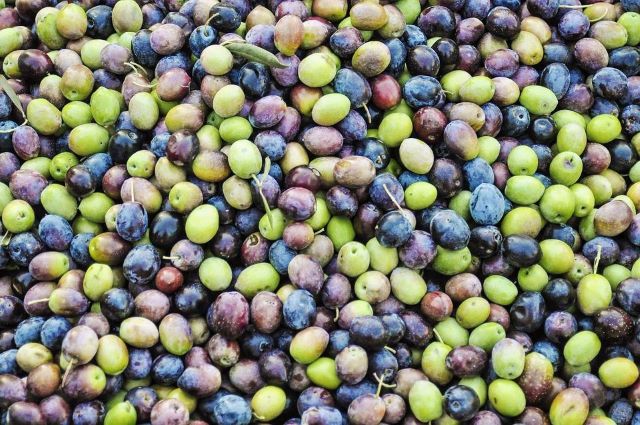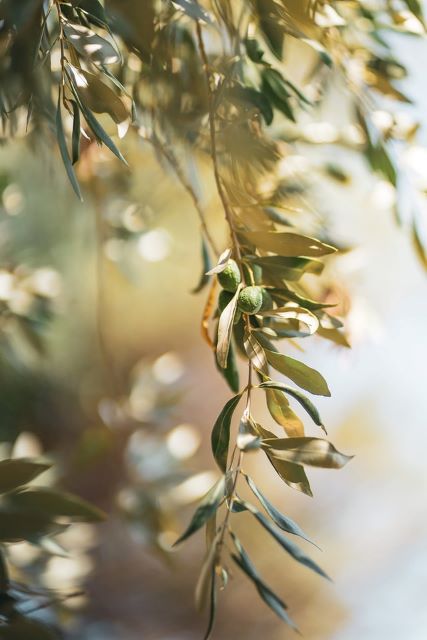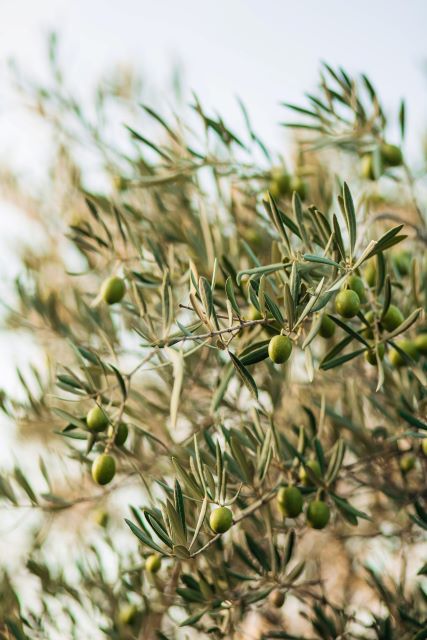With the olive harvest season approaching it’s disappointing to discover you are growing small olives. In this article, I’ll go through the cause of your olive tree producing small olives and solutions you can use to produce bigger olives.
Small olives are often a result of irregular water, unsuitable temperature, insufficient sunlight, lack of soil nutrients, pest attacks, or pollination problems resulting in shot berries.
Let’s find out more details about each problem and look at the solution to growing bigger olives on your olive tree.

Table of Contents
Irregular Watering Causes Small Olives
Generally speaking, olive trees are drought tolerant and can get by with occasional rainfall once they are established. However, with environmental changes happening, we may need to lend our olive trees a helping hand with watering. A lack of water can result in small olives.
For newly planted olive trees, it’s a good idea to water once a week or if the top 2 inches of soil is dry for the first year. After the first year in the ground, generous watering once a month is substantial during the warmer months when there is a lack of rainfall.
Olive trees have a shallow root system, so overwatering can lead to root rot if planted in an area with heavy rainfall. As olive trees are native to a dry climate, they require little interference with water during the cooler winter months.
You can monitor the moisture in the ground around the tree by using your finger- once a week, stick your finger into the soil. If it is wet within the first 2 inches of soil, then you don’t need to give water.

Unsuitable Temperatures Can Cause Small Olives
Native to a Mediterranean climate, olive trees are at their happiest at temperatures between 60-70 °F (15-21 °C). Mediterranean areas consist of mild winters. This makes a mature olive tree tolerant to 20 °F (-6 °C) for a short time.
Even though they are a lover of warm climates, they need around 200 hours of cold weather to set fruit, depending on the variety. The trees must enter the dormant stage for flower buds to fully mature.
During the cold months, the buds will form, and if there is the right amount of ‘chilling time when the warm weather approaches, these buds will turn to flowers and produce olives. If the buds fail to form during a sufficient chilling period, the buds will turn to leaves, and the tree will continue to vegetate.
This is why olive trees are not grown in tropical areas; the winters are not cool enough to produce fruit.
Before planting an olive tree, find out your region’s winter hours and make sure you are selecting a variety suitable for that region.
Insufficient Sunlight Causes Small Olives
A lack of sunlight can cause your olives to be small. Olive trees ideally need full sun, with at least 6-7 hours of sunlight per day.
If you determine your olive tree is not getting enough sunlight, you can try to give it more by transplanting it to a sunnier position sunny position in the garden.
While your olive tree is in the fruiting stage, the sunlight hours are essential for the size of your fruit.
Keep in mind, if you are assessing your garden for the perfect spot to plant your olive tree at the beginning of spring, the amount of sun the area gets when your tree is fruiting will likely be different. So understanding the sunlight hours in different areas of your garden throughout the year will help you decide the best spot for your olive tree.
If you can find the sunniest position in your garden, your olive tree will be happiest there. In addition to thinning its branches to help the light to come through, the position will have you well underway to grow larger olives.

Lack Of Soil Nutrients Can Cause Small Olives
Olive trees are pretty hardy and capable of growing in fairly poor soil conditions though soil lacking in nutrients will produce smaller olives.
Growing your olive tree in fertile soil will produce bigger olives and a healthy tree. Aged animal manure is a fantastic organic fertilizer for your olive trees, and it can come from goats, chickens, sheep, cows, or ducks.
One of my neighbors has an olive tree growing in their duck pen, and the tree is producing bigger yields than the rest of her olive trees.
If animal manures are not readily available you can look into an organically produced fertilizer like this one. Olive trees require a 16-16-16 nitrogen, phosphorus, and potassium ratio for a healthy life-producing fruit each year. You can apply it at the beginning of spring to the tree’s base.
Pest Attack Causes Small Olives
One of the most damaging pests seen on olive trees is olive flies. These fruit flies are native to eastern Africa and detected around the globe, eating their way through crops and reducing the value of olive oil produced.
Olive flies will make their way into the fruit like any other fruit fly and eat away from the inside out. This happens while the olive is growing and ripening, causing the growth of the fruit to be stunted.
Early detection of olive flies can be done by inspecting fallen fruit for signs of white grubs and checking the olives on the tree for any signs of entry.
After checking the olive tree for olive fly larvae, you can set up a homemade fly trap. I use a mix of apple cider vinegar and dish soap in a bowl. After it’s microwaved, it will become aromatic to the flies resulting in them landing on the surface and drowning. It sounds pretty awful but better than them eating the produce!
For another option to get rid of the pests on your olives, you may want to opt for an organic store-bought product like this one.
Poor Pollination Results In Shot Berries
When weather patterns are unpredictable, producing unexpected heat and dry winds, olive tree pollination problems can occur. And poor pollination increases the chances of olive shot berries forming.
Olive shot berries are tiny unusable olive fruits that grow to about 1/8 Inch (4mm). These deformed look-a-like olives grow in abundance and can grow alongside healthy olive fruits on the same tree. They are sometimes known as Chicken Fruit or Parthenocarpic fruit.
Olive shot berries form when pollen transfer has been disrupted and unable to reach the flower ovule, resulting in the fruit not being set correctly.
The shot berries will eventually drop off the tree after reaching their cycle.
As the olive shot berry is due to pollination issues, you can look into other cross-pollination methods to prevent it in the future. Planting different varieties in one area can reduce the likelihood of shot berries occurring in the future.
Does Pruning My Olive Tree Result In Bigger Olives?
Because of where my olive tree is situated, pruning it once a year is necessary to keep it from hanging into an unwanted space. What I didn’t realize was that pruning my olive tree can bring other benefits too.
While pruning my olive tree doesn’t produce bigger olives it does produce more olives on the tree each year. Olives will grow on the new wood of the tree, so pruning the head of the tree not only creates more branches for olives to grow but allows more sunlight to come through.
Pruning can be done in late spring or early summer to promote the best future growth by thinning out the crowded branches to allow more sunlight.
Related Reading:
